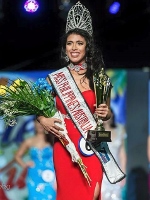
The people of the region already had indigenous cultures and traditions even before Islam was introduced.
Most of these have been retained to the present day. Some of the inhabitants might have been Westernised in their way of dressing but many of them remain unaffected and still cling to their dress styles which are visibly Malayan in character. This particularly evident among the Tausugs and Yakans.
In spite of the strong Western influences on the way of dressing among most ethnic groups, the Yakans have preserved a traditional dress style. Both sexes use the same type of blouse called badju which has tight fitting sleeves and an opening at the front. The lower part garment is the trousers called sawal which, like the blouse, is also tight –fitting.
The best trousers are made of hand-woven striped material called laup but, in some cases, they are made of cotton. Black trousers and blouse are very common among men and women although white is mainly reserved for the male Yakan.
Male and female attires are marked accessories. The Yakan male uses a handwoven head cloth called pis and a wide belt called kandit which is fashioned out of a 15-meter long red cotton material. A pentagonal breast covering is worn over the women’s blouse. The costliest part of the female costume is a hand-woven rectangular cloth called saputangan which is used as a belt to hold up the short skirt covering the trousers.
Contemporary Yakan women now wear various costumes, a slight departure from the traditional attire. A thin loosely hanging blouse worn over a camisun is now very common. Women wear a variety of ornaments such as earrings, bracelets and finger rings mostly made out of shells, silver, and gold.
During the festival, Yakan women make up themselves. Nails of the ring and little finger of the left hand are painted silver while a large comb adorns the hair.
Generally, the inhabitants of Sulu wear the habul or patadyung, a garment very similar to Indonesia’s sarong. Both sexes wear the very popular sawal which is made of soft cloth. Men often wear sawal with polo shirt, and around the waist they wear a wide belt serving as pockets for money and documents.
The rule for Filipino Muslim women is modesty in dressing, the ideal being exposure only of the hands and feet and head from the neck up.
When women wear the sawal they usually wear it with a short-sleeved V-necked blouse or a lengthy blouse reaching below the hips. Sometimes women add a folded patadyung slung from the right shoulder diagonally across the body to complete their sawal and blouse ensemble. A really dressed-up Tausug women will wear batawi, a blouse with a tight-fitting bodice which flares at the waist.
The neck is scooped deep in front to display a pendant. Sometimes it is dotted with gold buttons on the sleeves, around the neckline and along the front opening.








Leave a Reply